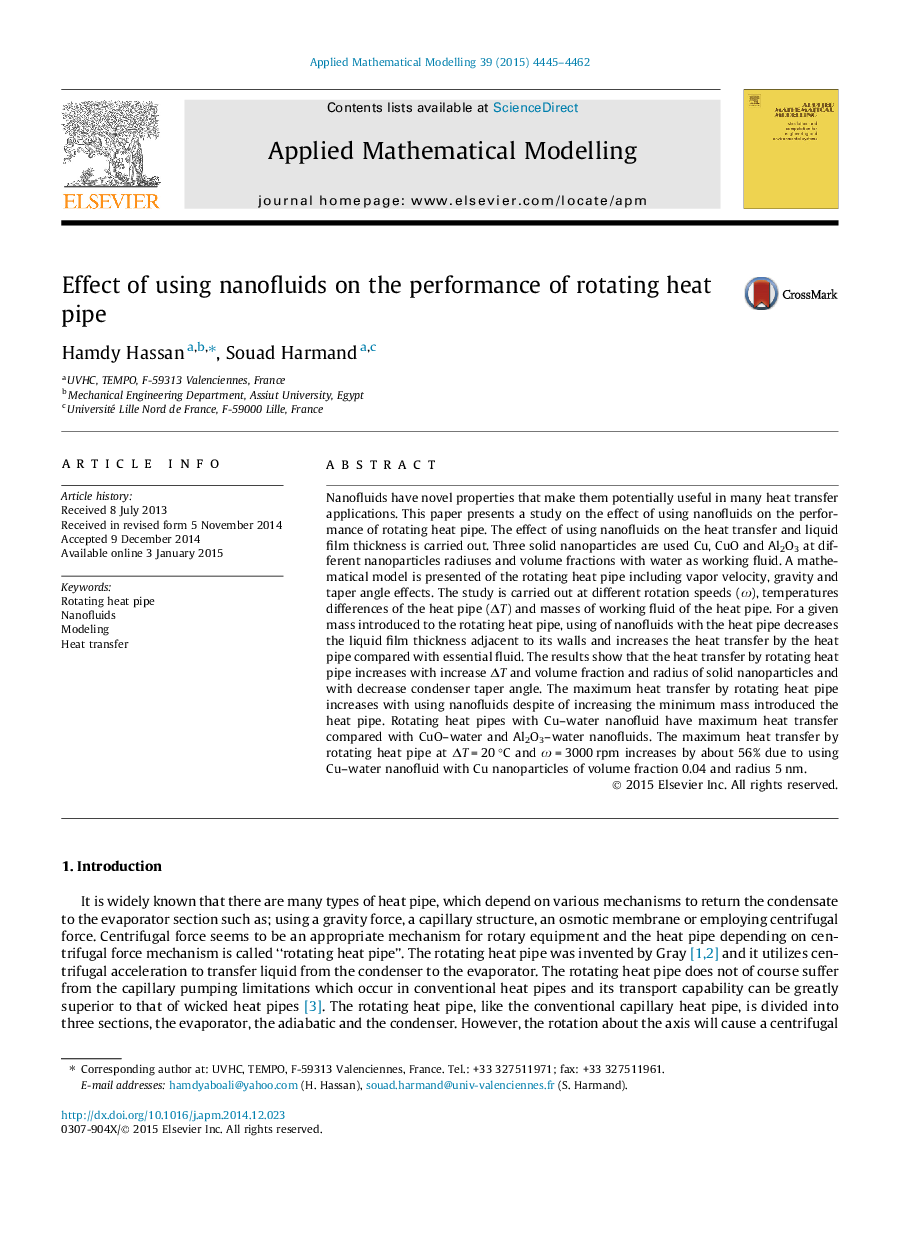| Article ID | Journal | Published Year | Pages | File Type |
|---|---|---|---|---|
| 1703430 | Applied Mathematical Modelling | 2015 | 18 Pages |
Nanofluids have novel properties that make them potentially useful in many heat transfer applications. This paper presents a study on the effect of using nanofluids on the performance of rotating heat pipe. The effect of using nanofluids on the heat transfer and liquid film thickness is carried out. Three solid nanoparticles are used Cu, CuO and Al2O3 at different nanoparticles radiuses and volume fractions with water as working fluid. A mathematical model is presented of the rotating heat pipe including vapor velocity, gravity and taper angle effects. The study is carried out at different rotation speeds (ω), temperatures differences of the heat pipe (ΔT) and masses of working fluid of the heat pipe. For a given mass introduced to the rotating heat pipe, using of nanofluids with the heat pipe decreases the liquid film thickness adjacent to its walls and increases the heat transfer by the heat pipe compared with essential fluid. The results show that the heat transfer by rotating heat pipe increases with increase ΔT and volume fraction and radius of solid nanoparticles and with decrease condenser taper angle. The maximum heat transfer by rotating heat pipe increases with using nanofluids despite of increasing the minimum mass introduced the heat pipe. Rotating heat pipes with Cu–water nanofluid have maximum heat transfer compared with CuO–water and Al2O3–water nanofluids. The maximum heat transfer by rotating heat pipe at ΔT = 20 °C and ω = 3000 rpm increases by about 56% due to using Cu–water nanofluid with Cu nanoparticles of volume fraction 0.04 and radius 5 nm.
